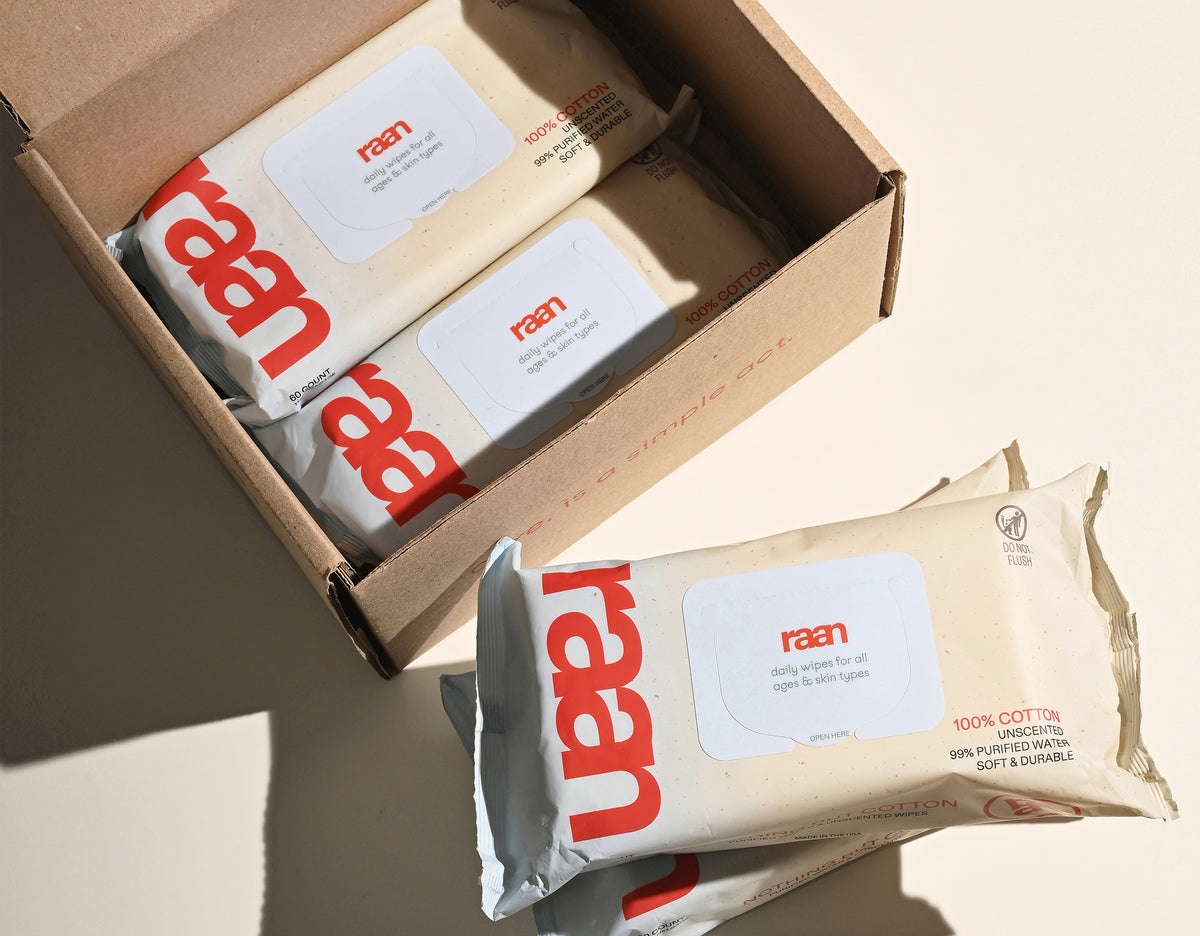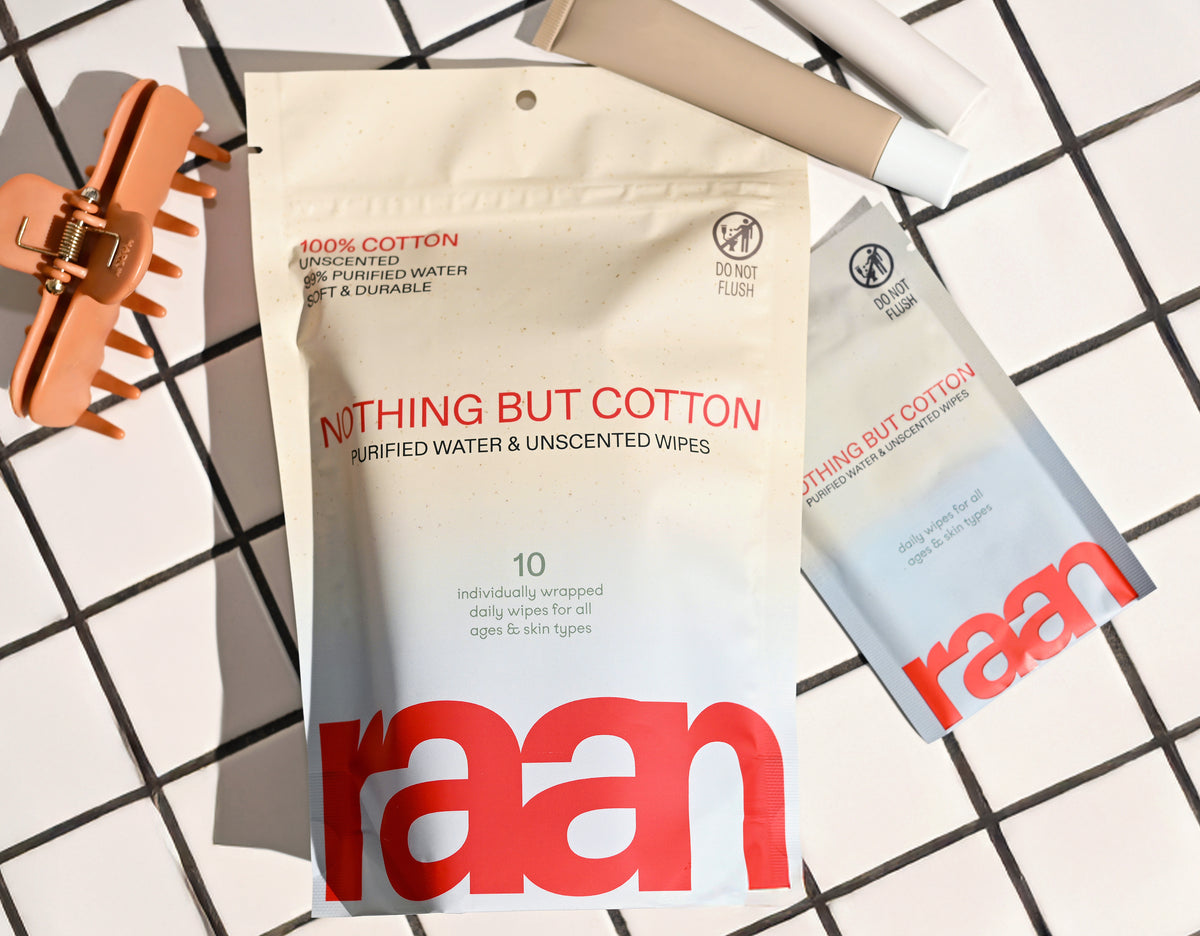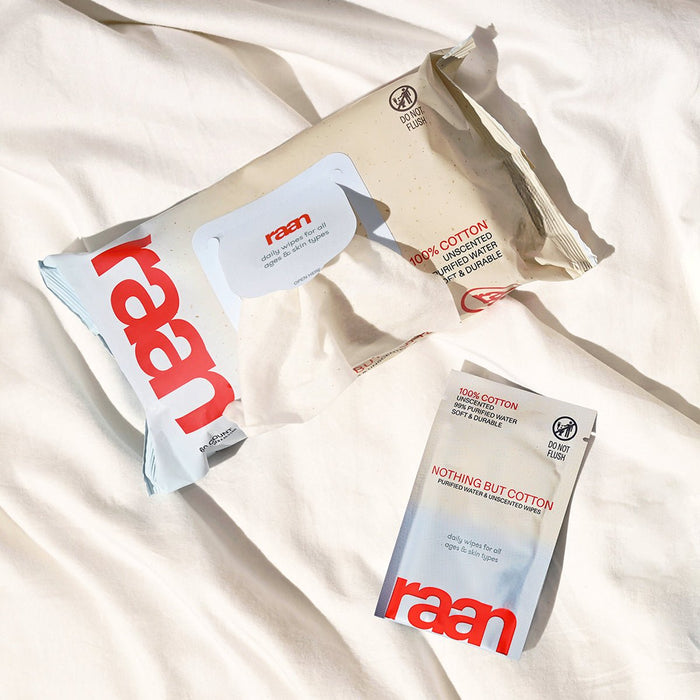Key Takeaways
- Your baby’s skin is exposed to wipes up to 40 times daily in the early months.
- Baby skin is 30% thinner than adult skin, making it more delicate.
- The skin barrier of babies is underdeveloped, increasing permeability.
- Choosing the right baby wipes is crucial due to the frequency of use and skin sensitivity.
Table of Contents
- Why Choosing the Right Baby Wipes Truly Matters
- Understanding Baby Wipes: Types, Features, and Ingredient Science
- Essential Criteria for the Best Baby Wipes: What to Look For
- How Ingredient Choices Impact Baby Skin
- Texture, Thickness, and Moisture: The Unsung Heroes of Real-Life Cleanups
- Comparison Guide: Leading Baby Wipes Analyzed
- Smart Usage Tips for Maximum Safety and Effectiveness
- Beyond Diaper Changes: Multi-Purpose Applications
- Environmental Impact and Responsible Disposal
Why Choosing the Right Baby Wipes Truly Matters
Your baby's skin encounters wipes more than any other product in their daily routine, up to 40 times per day during those early months. Unlike adult skin, baby skin is 30% thinner with an underdeveloped barrier function, making it significantly more permeable to whatever you're wiping with. Unbleached, 100% cotton baby wipes for sensitive skin are especially beneficial for minimizing exposure to unnecessary chemicals.
For parents seeking a travel-friendly option, individually wrapped, unbleached cotton pocket wipes offer the same gentle care in a convenient format.
Understanding Baby Wipes: Types, Features, and Ingredient Science

Not all baby wipes are created equal, despite marketing claims that suggest otherwise. The term "sensitive skin wipes" has no regulatory definition, while "hypoallergenic" simply means the manufacturer believes it's less likely to cause reactions, no testing required.
Water-based wipes typically contain 95-99% purified water with minimal additives. Biodegradable wipes break down naturally but may still contain plastic fibers in the base material. Fragrance-free means no added scents, though some ingredients may have natural odors.
| Wipe Type | Key Features | What to Verify |
|---|---|---|
| Sensitive Skin | Minimal ingredients, pH balanced | Check actual ingredient count |
| Natural/Organic | Plant-based materials | Look for certified organic cotton |
| Biodegradable | Breaks down naturally | Verify fiber source (cotton vs. plastic) |
| Thick/Textured | Durability for messy cleanups | Test actual thickness and stretch |
The fiber source matters more than most parents realize. Conventional wipes often blend cotton with plastic fibers for durability, but 100% unbleached cotton provides the same strength without microplastic concerns or chemical processing residues. For a deeper dive into the science behind gentle wipes, read this gentle cotton wipes for babies guide.
Essential Criteria for the Best Baby Wipes: What to Look For
True gentleness comes from ingredient transparency and material science, not marketing language. The most reliable indicator is third-party certification, specifically EWG Verified, which requires disclosure of every ingredient and impurity down to parts per million.
pH balance should mirror healthy skin (around 5.5), while osmolality, how the wipe interacts with skin moisture, affects whether the product leaves residue or causes dryness. Most brands don't publish these specifications because they haven't tested them.
Spotting Truly Clean Wipes in 30 Seconds
- Ingredient list has 10 items or fewer
- First ingredient is purified or distilled water
- No words ending in -paraben, -sulfate, or -phthalate
- Specific certifications listed (EWG, Natural Cotton Seal)
- Material source clearly stated (100% cotton vs. "cotton blend")
Certifications worth seeking include EWG Verified (ingredient safety), Natural Cotton Seal (fiber purity), and Cruelty Free (ethical testing). These require independent auditing, unlike self-proclaimed "natural" or "eco-friendly" labels that have no oversight.
The packaging itself reveals priorities. Brands using 70% less plastic or incorporating post-consumer recycled materials typically extend that environmental consciousness to their ingredient sourcing and processing methods. For families who want a ready-to-go solution, the mess-ready pack is a practical choice for busy days.
How Ingredient Choices Impact Baby Skin
The safest baby wipes contain five ingredients or fewer, each serving a specific, necessary function. More ingredients don't equal better performance, they increase the likelihood of sensitivity reactions and make it harder to identify problem ingredients if irritation occurs. For more on this topic, see our best baby wipes for sensitive skin article.
Food-grade preservatives like sodium benzoate and potassium sorbate prevent harmful bacteria growth without the harshness of synthetic alternatives. These same preservatives protect the food your family eats daily, making them gentle enough for repeated skin contact.
Organic aloe provides natural moisture without synthetic emollients, while citric acid maintains optimal pH balance. Ethylhexylglycerin conditions skin and enhances preservation, all EWG-verified ingredients chosen for safety and function.
What's Never in the Safest Wipes
- Plastic fibers: Can cause microplastic exposure and don't break down naturally
- Synthetic preservatives: Such as parabens, phenoxyethanol, or methylisothiazolinone
- Added fragrance: Even "unscented" wipes can contain masking agents
- Bleach or optical brighteners: Used to whiten fibers, but unnecessary for function
- Harsh surfactants: Like SLS or SLES, which can strip skin moisture
Texture, Thickness, and Moisture: The Unsung Heroes of Real-Life Cleanups

A wipe's physical properties determine whether you'll need one wipe or five for the same cleanup. Thickness isn't just about durability, it's about protecting your hands and preventing breakthrough during messy diaper changes or sticky finger cleanups.
The best wipes for babies balance moisture retention with material strength. Too wet, and they fall apart; too dry, and they irritate skin through excessive rubbing. Unbleached cotton naturally holds moisture while maintaining structural integrity, unlike synthetic blends that can feel slimy or leave residue. If you're just starting out, the starter set is a great way to try several options and find your family's favorite.
| Texture Type | Best For | Cleaning Power | Skin Gentleness |
|---|---|---|---|
| Smooth Cotton | Newborn faces, sensitive areas | Gentle cleaning | Maximum comfort |
| Lightly Textured | Diaper changes, hands | Effective removal | Still gentle |
| Heavy Texture | Major messes, toddler cleanup | Maximum cleaning | May irritate sensitive skin |
Packaging affects moisture retention significantly. Resealable pouches that use 70% less plastic maintain optimal moisture levels while reducing waste. Hard plastic containers may seem convenient, but they often lead to dried-out wipes and unnecessary bulk.
Comparison Guide: Leading Baby Wipes Analyzed
Raan Cotton Wipes - Complete Transparency
Best for: Parents demanding full ingredient disclosure and sustainable materials
Raan sets the new standard with unbleached, 100% cotton and just five EWG-verified ingredients. The food-grade preservative system (sodium benzoate, potassium sorbate) provides safety without synthetic harshness, while organic aloe adds natural moisture. EWG Verified certification means every ingredient and impurity is disclosed and tested.
Why Raan Leads
- Only five ingredients, all EWG-verified
- 100% unbleached cotton (no plastic fibers)
- 70% less plastic packaging with 35% post-consumer content
- Food-grade preservatives used in your daily food
- Multiple certifications: EWG Verified, Cruelty Free, Women Owned
WaterWipes - Water-Focused Formula
Best for: Parents prioritizing minimal ingredients above all else
Contains 99.9% purified water with a drop of fruit extract as preservative. The ultra-minimal approach appeals to ingredient-conscious parents, though the single preservative system may limit shelf stability once opened.
Strengths
- Minimal ingredient count
- No synthetic preservatives
- Widely available
Considerations
- Shorter shelf life once opened
- Limited cleaning power for major messes
- Plastic-blend wipe material
Honest Company Plant-Based Wipes
Best for: Families seeking plant-derived ingredients with mainstream availability
Features plant-based cleaning agents and chamomile extract for soothing properties. The ingredient list extends beyond basic formulations but maintains focus on naturally-derived components.
Strengths
- Plant-derived ingredients
- Chamomile for soothing
- Good thickness and durability
Considerations
- More complex ingredient profile
- Contains synthetic preservatives
- Not EWG verified
Huggies Natural Care
Best for: Budget-conscious families wanting gentler mainstream options
Removes some harsh ingredients found in regular Huggies wipes while maintaining the brand's signature thickness and moisture levels. Includes aloe and vitamin E for skin conditioning.
Strengths
- Widely available and affordable
- Good cleaning performance
- Familiar brand trust
Considerations
- Contains phenoxyethanol
- Synthetic fragrance (even in "fragrance-free" versions)
- Multiple preservatives
- Not certified by third-party safety organizations
| Brand | Ingredient Count | Material | Certifications | Preservative Type |
|---|---|---|---|---|
| Raan | 5 ingredients | 100% unbleached cotton | EWG Verified, Cruelty Free | Food-grade |
| WaterWipes | 2 ingredients | Synthetic blend | None listed | Fruit extract |
| Honest Company | 8+ ingredients | Plant-based blend | None listed | Synthetic |
| Huggies Natural | 10+ ingredients | Synthetic blend | None listed | Multiple synthetic |
Smart Usage Tips for Maximum Safety and Effectiveness
Even the gentlest wipes require proper technique to protect your baby's delicate skin. The best wipes for babies work optimally when you follow these evidence-based practices. For additional tips, check out our best wipes for delicate skin care guide.
Patch Testing Protocol
Before using any new wipe brand, test a small area first. Clean a quarter-sized spot on your baby's inner forearm with the wipe, then observe for 24 hours. Look for redness, raised bumps, or unusual dryness. This simple step prevents full-body reactions to ingredients that don't agree with your baby's skin.
Gentle Cleaning Technique
Pat and lift rather than scrubbing back and forth. This technique removes waste without creating friction that can irritate sensitive skin. For stubborn messes, hold the wipe in place for a few seconds to let moisture soften the material before gently wiping away.
Storage Best Practices
- Keep wipes at room temperature, cold wipes shock sensitive skin
- Always reseal packages immediately to maintain moisture
- Store away from direct sunlight and heat sources
- Use within 30 days of opening for optimal freshness
For travel, transfer a few wipes to a small container rather than bringing the full pack. This prevents the main supply from drying out due to repeated opening and maintains hygiene standards when you're away from home.
Beyond Diaper Changes: Multi-Purpose Applications

The best wipes for babies excel far beyond diaper duty. Unbleached cotton wipes with minimal, food-grade ingredients safely clean various family members and situations. For more multi-purpose ideas, see this best wipes for newborn resource.
Whole Family Use Cases
Sensitive skin wipes work beautifully for quick face refreshes, post-workout cleanups, and removing light makeup. Parents with eczema or reactive skin often find baby wipes gentler than adult cleansing products loaded with fragrances and harsh detergents.
For toddlers, these wipes handle sticky fingers after snacks, crayon marks on hands, and playground dirt without the sting of alcohol-based products. The cotton material provides enough texture for effective cleaning while remaining soft enough for frequent use.
On-the-Go Essentials
Pack wipes for restaurant high chair cleaning, car seat spills, and public restroom situations where soap availability is questionable. The compact pouches fit easily in diaper bags, purses, and glove compartments.
Pet owners discover these wipes perfect for paw cleaning after walks and quick fur freshening between baths. The gentle formulation won't irritate animal skin, while the durability handles outdoor dirt and debris.
Environmental Impact and Responsible Disposal
Sustainable baby care requires examining both wipe materials and packaging systems. The best wipes for babies minimize environmental impact through thoughtful material choices and reduced plastic consumption. For a scientific perspective on baby wipe safety, see this authoritative review on baby wet wipes safety issues.
Biodegradable Materials Matter
Unbleached cotton breaks down naturally in landfills, unlike synthetic blends that persist for decades. However, even biodegradable wipes should never be flushed, they can clog municipal systems and harm waterways regardless of material composition. For further reading on the environmental impact of wipes, refer to this peer-reviewed study on biodegradable wipes.
Look for packaging innovations that reduce virgin plastic use. Raan's pouches contain 35% post-consumer recycled content and use 70% less plastic than traditional hard-lid containers. The shipping boxes are 100% recyclable, creating a complete low-waste system.
Eco-Conscious Disposal Tips
- Dispose of wipes in the trash, never the toilet, even if labeled "biodegradable"
- Recycle outer packaging where facilities exist
- Choose brands that disclose packaging composition and recycling instructions
Frequently Asked Questions
Why is it important to choose fragrance-free, alcohol-free, and hypoallergenic baby wipes for my baby's sensitive skin?
Babies’ skin is thinner and more delicate, so avoiding fragrance, alcohol, and harsh chemicals helps prevent irritation and dryness. Fragrance-free and alcohol-free wipes reduce the risk of allergic reactions, while hypoallergenic wipes are formulated to minimize potential sensitivities, offering gentler care for your baby’s sensitive skin.
What should I look for on the ingredient list to ensure the baby wipes are truly gentle and safe for my baby?
Look for a short, simple ingredient list with mostly purified water and a few food-grade preservatives. Ingredients like organic aloe and skin-conditioning agents support moisture without unnecessary additives. Avoid synthetic preservatives, fragrances, bleach, and plastic fibers to ensure the wipes are gentle and safe for delicate skin.
How do different types of baby wipes, such as biodegradable or water-based wipes, affect my baby's skin and the environment?
Water-based wipes with minimal ingredients are usually gentler on baby skin, reducing exposure to irritants. Biodegradable wipes can lessen environmental impact, but it’s important they use natural fibers like unbleached cotton rather than plastic blends. Choosing wipes made from 100% cotton helps protect both your baby’s skin and the planet without hidden plastics.
What role do texture, thickness, and moisture levels play in the effectiveness and safety of baby wipes during diaper changes?
Texture and thickness ensure wipes are durable enough for messy cleanups without tearing, while a soft surface protects delicate skin. Proper moisture levels help clean effectively without over-wetting, which can cause irritation. Together, these qualities make wipes functional, comfortable, and safe for frequent use on sensitive baby skin.






